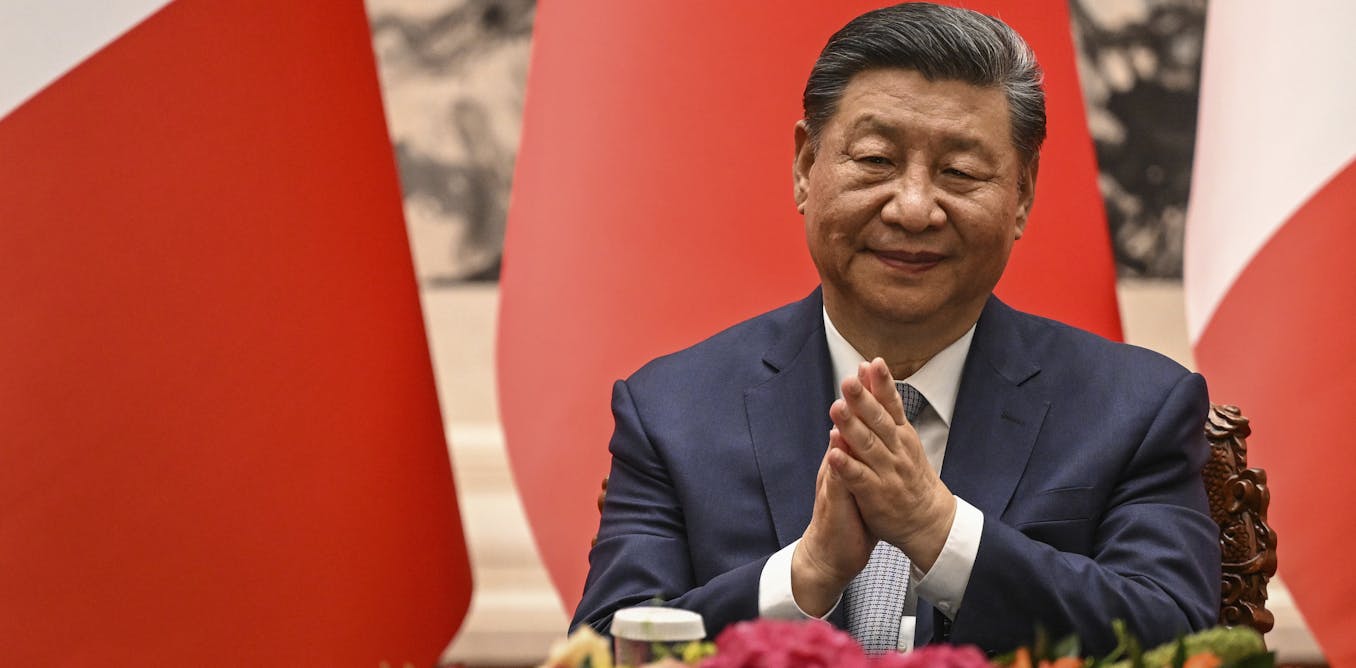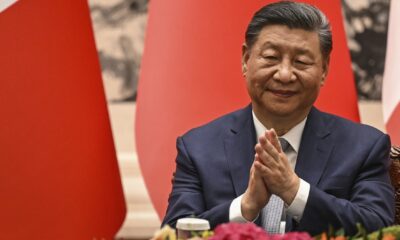China
Semiconductor tensions chip away at cross-Strait relations
Author: Yvette To, CityU
US House of Representatives Speaker Nancy Pelosi’s visit to Taiwan and President Joe Biden’s pledge that the United States would defend the island have escalated tensions in the Taiwan Strait. At the 20th National Congress of the Chinese Communist Party, President Xi Jinping stressed the importance of reunifying with Taiwan.
The escalating US–China technology rivalry and global chip shortage make Taiwan’s role as a leading global supplier of semiconductors strategically and economically important to both powers.
The question is what will happen to global chip production in the event of a cross-Strait military conflict. COVID-19 lockdowns have already disrupted global semiconductor supply. Since global semiconductor production capacity is highly concentrated in Asia, including in Taiwan, South Korea and China, a cross-Strait military conflict will crimp the global production of semiconductors. In a military confrontation, China might impose an embargo on Taiwan’s exports of critical technologies.
Taiwan is home to several of the world’s largest semiconductor foundries. Together they represent more than 63 per cent of the global market share. The world is heavily dependent on the Taiwan Semiconductor Manufacturing Company (TSMC), which produces more than 90 per cent of the world’s most advanced semiconductors, including 5-nanometre chips.
Supply disruptions will directly impact Apple — TMSC’s largest customer — Nvidia, Qualcomm and AMD. It will also disrupt leading US technology companies specialised in computer processors and chipsets that power modern devices, from consumer electronics and medical equipment to artificial intelligence and military technologies.
With supplies from Taiwan crimped in the event of a cross-Strait conflict, companies may have to look to South Korea for replacement chips. Samsung is the world’s second largest semiconductor foundry by revenue, accounting for approximately 17 per cent of the global market — a 35 per cent smaller share than TSMC. But the production capacity of South Korean foundries is unlikely to meet global demand and Seoul could be drawn into the conflict should the United States get involved.
Chinese foundries produce around 8 per cent of the world’s semiconductors. But even if Chinese companies maintain their semiconductor production in a cross-Strait conflict, the chips they can mass produce are mainly 28-nanometre and 14-nanometre chips. These are less sophisticated and powerful than the 7-nanometre and 5-nanometre made by TSMC and Samsung.
While there were reports in August 2022 that China’s Semiconductor Manufacturing International Corporation had made a great leap in successfully developing 7-nanometre chips, the company’s mass production capacity remains unknown. Indeed, the global semiconductor supply chain is complex and involves different stages of manufacturing demanding high-, medium- and low-skilled inputs. Any disruption will have knock-on effects on upstream and downstream industries.
Southeast Asian countries are also involved in semiconductor manufacturing. Malaysia packages and tests newly made semiconductors, accounting for 13 per cent of the global market share. Singapore operates fabrication plants for US-based Micron and GlobalFoundries and several assembly and testing facilities for Taiwanese companies.
Many industries rely on a stable supply of semiconductors, exposing them to the effects of a cross-Strait conflict. The automotive industry is still battling the global chip shortage that emerged in 2020. Over the past few years, automakers have competed with other consumer electronics providers over chips made in Asia. Some automotive giants have already cut production, while others expect the chip crunch to last into 2024. A military conflict involving the global hub of chip production will further strain the industry, creating knock-on effects on other parts of the automotive supply chain.
The effects of a cross-Strait conflict can be mitigated by strengthening supply chain resiliency. Some countries and companies have already started diversifying and securing their semiconductor supply chains. But diversification comes with a cost. The US Chips and Science Act uses federal subsidies to lure technology firms — including US, Taiwanese and South Korean companies — to invest in cutting-edge chip development and manufacturing in the United States. Companies are not allowed to build advanced chipmaking facilities in China for 10 years to receive these subsidies.
China
Italy and China New DTA Set to Take Effect in 2025: Important Changes and Implications

Italy ratified an upgraded Double Tax Agreement (DTA) with China, effective in 2025, to reduce tax burdens, prevent evasion, and enhance investment. The DTA introduces modern provisions aligned with international standards, targeting tax avoidance and improving dispute resolution for Italian businesses.
Italy recently ratified the upgraded Double Tax Agreement (DTA), which will finally take effect in 2025. This agreement was signed in 2019 and was designed to reduce tax burdens, prevent tax evasion, and promote Italian investment in China.
On November 5, 2024, Italy’s Chamber of Deputies gave final approval to the ratification of the 2019 Double Tax Agreement (DTA) between Italy and China (hereinafter, referred to as the “new DTA”).
Set to take effect in 2025, the new DTA is aimed at eliminating double taxation on income, preventing tax evasion, and creating a more favorable environment for Italian businesses operating in China.
The ratification bill for the new DTA consists of four articles, with Article 3 detailing the financial provisions. Starting in 2025, the implementation costs of the agreement are estimated at €10.86 million (US$11.49 million) annually. These costs will be covered by a reduction in the special current expenditure fund allocated in the Italian Ministry of Economy’s 2024 budget, partially drawing from the reserve for the Italian Ministry of Foreign Affairs.
During the parliamentary debate, Deputy Foreign Minister Edmondo Cirielli emphasized the new DTA’s strategic importance, noting that the agreement redefines Italy’s economic and financial framework with China. Cirielli highlighted that the DTA not only strengthens relations with the Chinese government but also supports Italian businesses, which face increasing competition as other European countries have already established double taxation agreements with China. This ratification, therefore, is part of a broader series of diplomatic and economic engagements, leading up to a forthcoming visit by the President of the Italian Republic to China, underscoring Italy’s commitment to fostering bilateral relations and supporting its businesses in China’s complex market landscape.
The newly signed DTA between Italy and China, introduces several modernized provisions aligned with international tax frameworks. Replacing the 1986 DTA, the agreement adopts measures from the OECD/G20 Base Erosion and Profit Shifting (BEPS) Project and the OECD Multilateral Instrument (MLI), targeting tax avoidance and improving dispute resolution.
The Principal Purpose Test (PPT) clause, inspired by BEPS, is one of the central updates in the new DTA, working to prevent treaty abuse. This clause allows tax benefits to be denied if one of the primary purposes of a transaction or arrangement was to gain a tax advantage, a move to counter tax evasion through treaty-shopping.
| This article was first published by China Briefing , which is produced by Dezan Shira & Associates. The firm assists foreign investors throughout Asia from offices across the world, including in in China, Hong Kong, Vietnam, Singapore, and India . Readers may write to info@dezshira.com for more support. |
Read the rest of the original article.
Business
China’s New Home Prices Stabilize After 17-Month Decline Following Support Measures

China’s new home prices fell for the 17th month in October, declining 0.5% from September, but slowing, indicating potential market stabilization amid supportive measures. Second-hand home prices showed mixed trends.
Decline in China’s Home Prices Stabilizes
China’s new home prices continued to decline in October for the 17th consecutive month, although the drop showed signs of slowing. Recent support measures from Beijing appear to be inching the market toward stabilization, as evidenced by a lighter decline compared to earlier months.
Monthly and Yearly Comparisons
According to the latest data from the National Bureau of Statistics, new home prices across 70 mainland cities fell by 0.5% from September, marking the smallest decrease in seven months. Year-on-year, prices dropped by 6.2%, slightly worse than the September decline of 6.1%. In tier-1 cities like Beijing and Shanghai, prices decreased by 0.2%, a smaller fall than 0.5% in the previous month.
Second-Hand Home Market Trends
Second-hand home prices in tier-1 cities experienced a 0.4% increase in October, reversing a 13-month downward trend. Conversely, tier-2 cities observed a 0.4% drop in second-hand prices, while tier-3 cities faced a similar 0.5% decline. Overall, recent trends indicate a potential stabilization in China’s property market.
Source : China’s new home prices slow 17-month decline after support measures kick in
China
U.S. national debt is its Achilles’ heel, but China sees it as an opportunity

China is emerging as a dominant force in the Global South, challenging U.S. dollar hegemony by increasing gold reserves and reducing U.S. debt holdings, aiming for a multipolar economic landscape.
China is gradually establishing itself as a major player in what has recently been called the Global South, previously known as the Non-Aligned Movement. Over the last few decades, China has become the world’s biggest creditor of developing countries. That has prompted many to fear that it will subjugate partners through the “debt trap” and use this to establish a “hegemonic sphere of influence.”
China’s economic position is so strong that it is now considered the main threat to the U.S. dollar. It is an influential member of the BRICS+ group (which also includes Brazil, Russia, India and South Africa). This group is working to establish a multipolar world that challenges the hegemony of the West, specifically the leadership of the United States. I analyzed this issue in a previous article.
Without using the term “threat,” the U.S. administration now sees China as the “most serious long-term challenge” to the international order. It’s easy to understand why, since China’s strategic objective is to put an end to the supremacy of the U.S. dollar, the keystone of U.S. hegemony.
As a researcher in international political economy at the Université Laval, I am looking at the role China is playing in the dedollarization of the world.
The stronghold of the U.S. dollar
The supremacy of the U.S. dollar underpins American hegemony in the current international order, as French economist Denis Durand explains in his article Guerre monétaire internationale: l’hégémonie du dollar contestée? (International currency war: the dollar’s hegemony challenged?).
In addition to the fact that several currencies are linked to the dollar by a fixed link or band of fluctuation, American currency is also used in many Third World and Eastern European countries, where it enjoys a much higher level of public confidence than do local currencies. […] The United States is the only power that can incur foreign debt in its own currency.
The hegemony of the U.S. dollar over the world economy is reflected in its over-representation in the foreign exchange reserves held by the world’s central banks. The greenback still outstrips other currencies even though there has been some erosion in this.
Despite a fall of 12 percentage points between 1999 and 2021, the share of the U.S. dollar in the official assets of the world’s central banks remains fairly stable at around 58-59 per cent.
U.S. currency still enjoys widespread confidence around the world, reinforcing its status as the preeminent reserve currency. The U.S. dollar reserves of the world’s central banks are invested in U.S. Treasury bills on the U.S. capital market, helping to reduce the cost of financing both government debt and private investment in the United States.
However, the income generated for the U.S. economy by the hegemony of its dollar could also collapse like a house of cards. Durand makes this point when he writes that “the monetary hegemony of the United States […] is held together only by the confidence of economic agents around the world in the American dollar.”
There are two reasons that the world’s confidence in the U.S. dollar could decrease.
Firstly, as U.S. Treasury Secretary Janet Yellen admitted in an interview in April 2023, the United States is unequivocally using its dollar as a tool to bend enemies — but also some recalcitrant allies — to its will. This could ultimately undermine the dollar’s hegemony.
On the other hand, the U.S. debt situation, particularly its unsustainability, is a source of concern that could affect the dollar’s attractiveness as a global reserve currency.
Unsustainable debt
The U.S. dollar has been at the heart of the international monetary system since 1944, and even more so since the Bretton Woods Agreement came into force in 1959.
The Bretton Woods system was based on both gold and the greenback, which was the only currency convertible into gold; this convertibility was fixed at the rate of $35 per ounce.
That changed on Aug. 15, 1971, when, because of inflation and the growing imbalances in the United States’ international economic relations, Richard Nixon announced the end of the dollar’s convertibility into gold.
With the dollar pegged to gold, the United States’ ability to take on debt to meet public spending was limited. Under the gold-based system, where gold was the guarantor of the U.S. currency, the United States could only borrow according to the quantity of dollars in circulation and its gold reserves.
Abandoning the gold-based system gave the U.S. free rein over its debt. In 2023, the U.S. public debt reached more than $33.4 trillion, nine times the country’s debt in 1990.
This astronomical figure continues to raise concerns about its long-term sustainability. As U.S. Federal Reserve Chairman Jerome Powell has pointed out, U.S. debt is growing faster than the economy, making it unsustainable in the long term.
An opportunity for China
This is a reality to which China is clearly attuned, since it recently undertook a massive sell-off of the U.S. debt it owned. Between 2016 and 2023, China sold $600 billion worth of U.S. bonds.
However, in August 2017 China was the United States’ largest creditor, ahead of Japan. It held more than $1.146 billion in U.S. Treasuries, almost 20 per cent of the amount held by all foreign governments. Beijing is now the second-largest foreign holder of U.S. debt, with a claim of around $816 billion.
It is certainly no coincidence that before divesting itself of U.S. bonds, Beijing first launched its own gold pricing system in yuan. In fact, on April 19, 2016, the Shanghai Gold Exchange, China’s operator for precious metals, unveiled on its website its first “fixed” daily benchmark for gold at 256.92 yuan per gram.
This policy is part of China’s strategy to make gold a tangible guarantee of its currency.
China’s “Gold for Dollars” strategy
China is also selling its U.S. bonds. According to the U.S. Treasury, between March 2023 and March 2024, China sold off $100 billion in U.S. Treasuries, on top of the $300 billion it had already sold off over the past decade.
At the same time, the Middle Kingdom has replaced around a quarter of the U.S. Treasuries sold in 10 years with gold, of which it is now the leading producer and consumer. Like China’s central bank, other central banks in emerging countries continue to buy gold.
China’s appetite for gold was confirmed in 2010, when its gold reserves rose to 1,054 tonnes, from around 600 tonnes in 2005. Ten years later, in 2020, its stock of gold had almost doubled again, to nearly 2,000 tonnes. By the end of 2023, with a gold reserve of 2,235 tonnes, China will be the country with the sixth-largest gold reserve.
As a substitute for the dollar, gold enables China to store the gains from its large trade surpluses. With the Shanghai Gold Exchange, which offers gold trading contracts in Yuan, Beijing is seeking to strengthen the use of its currency abroad with the aim of establishing the yuan as the benchmark currency for the global economy.
This article is republished from The Conversation under a Creative Commons license. Read the original article.






